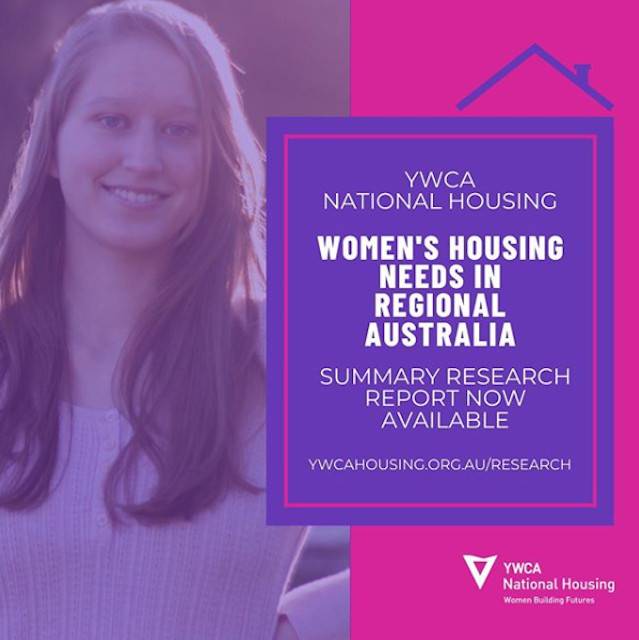Women's Housing Crisis

New research shows Gen Z and Gen Y face housing crisis
One quarter of young women living in regional Australia have been homeless in the past five years, according to new research into women's access to safe, affordable housing.
The study of 1039 regional women on low to moderate incomes[i], including more than 350 women aged 18 – 40 years, is the first national study into women's access to affordable housing outside Australia's capital cities.
It found 25 per cent of Gen Z women and 20 per cent of Gen Y women in regional areas had been homeless in the past five years, compared with 12 per cent of Gen Xers and 5 per cent of Boomers.
YWCA National Housing and Property Development Director Jan Berriman said the Women's Housing Needs in Regional Australia report also revealed more than one third of young women had gone without meals in order to pay their rent or mortgage.
"In addition, more than one quarter of Gen Z women and 22 per cent of Gen Y women have lived with friends or family in the past five years because they were unable to afford the private rental market," Ms Berriman said. "This compares with 10 per cent of Gen Xers and 6 per cent of Boomers."
Overall, the report found one in eight women living in regional Australia had been homeless in the past five years, a higher level than previous studies and statistics.
"One quarter of women who had been homeless, either in the past five years or currently, did not share their situation with any family member or friend, reflecting the likelihood of a much higher level of homelessness amongst regional women than previously understood," Ms Berriman said.
It also found 54 percent of Gen Z women and 57 per cent of Gen Y women had asked for financial help from family or friends in the past 12 months compared with 45 per cent of Gen Xers and 22 per cent of Boomers.
"This research reveals the inadequacy of affordable housing stock in Australia and serves as a call to arms for the government and private sector as well as community organisations to come together to create innovative, affordable housing solutions for thousands of women and children across the country," Ms Berriman said.
The research found women in regional NSW most frequently reported experiencing homelessness in the past five years (17 per cent) and women in regional South Australia reported this least (8 per cent). The national average was 12 per cent.
Ms Berriman said the numbers of women experiencing homelessness were expected to increase in the aftermath of bushfires, droughts and pandemics like COVID-19 because housing and jobs would be lost and rates of domestic and family violence were likely to increase.
"Domestic and family violence is the leading cause of homelessness for women in Australia, and in regional areas the impacts are even more severe because social services and supports may be limited and strained to start with," she said.
Ms Berriman said the research revealed an urgent need to double and diversify affordable regional housing options in regions or face a tsunami of homeless women and children.
"Government, philanthropic, corporate and community organisations need to partner to create and increase the supply of social and affordable housing options whilst funding housing support services across the country."
This research was partially funded by the Commonwealth Department of Industry, Innovation and Science through the Building Better Regions Fund Community Investments Stream Round 3.
Find the full report here.
MORE





